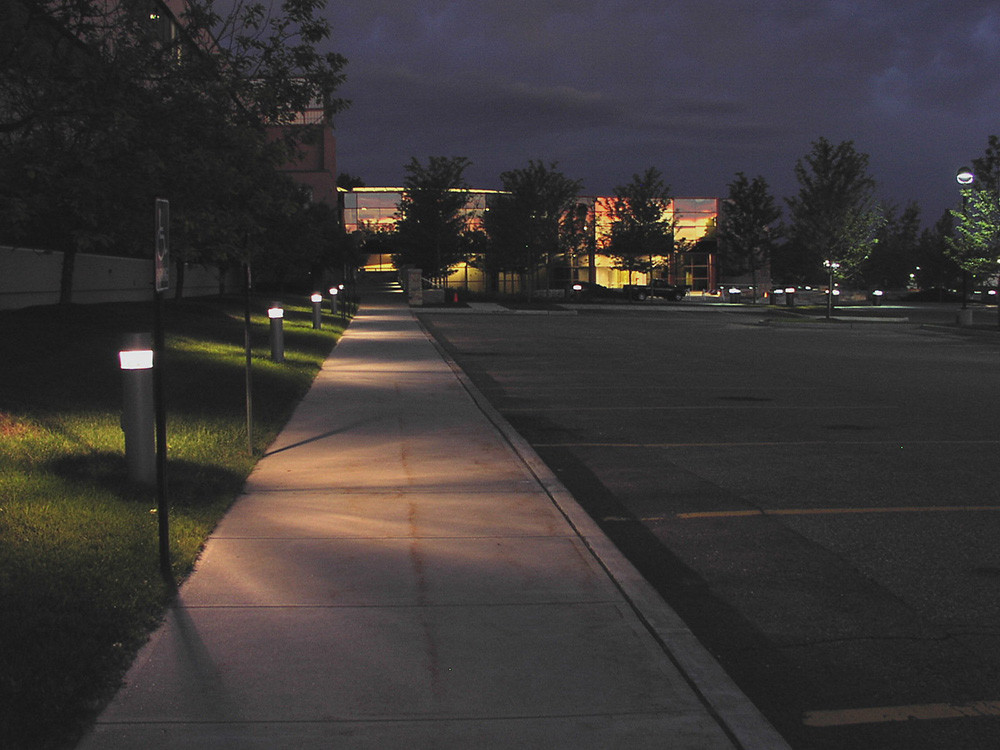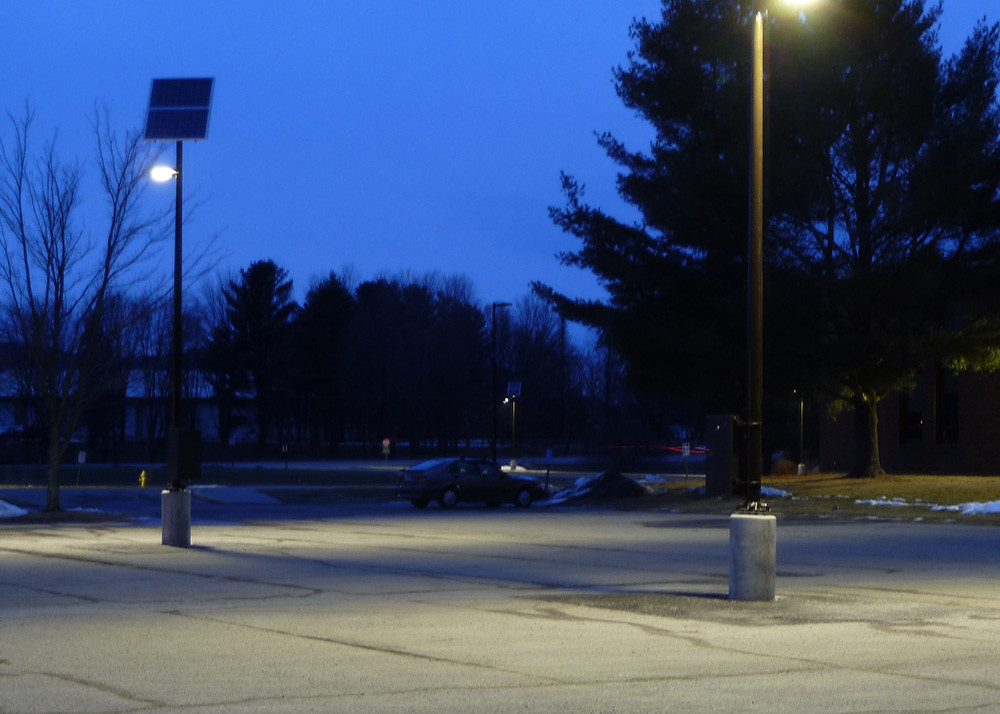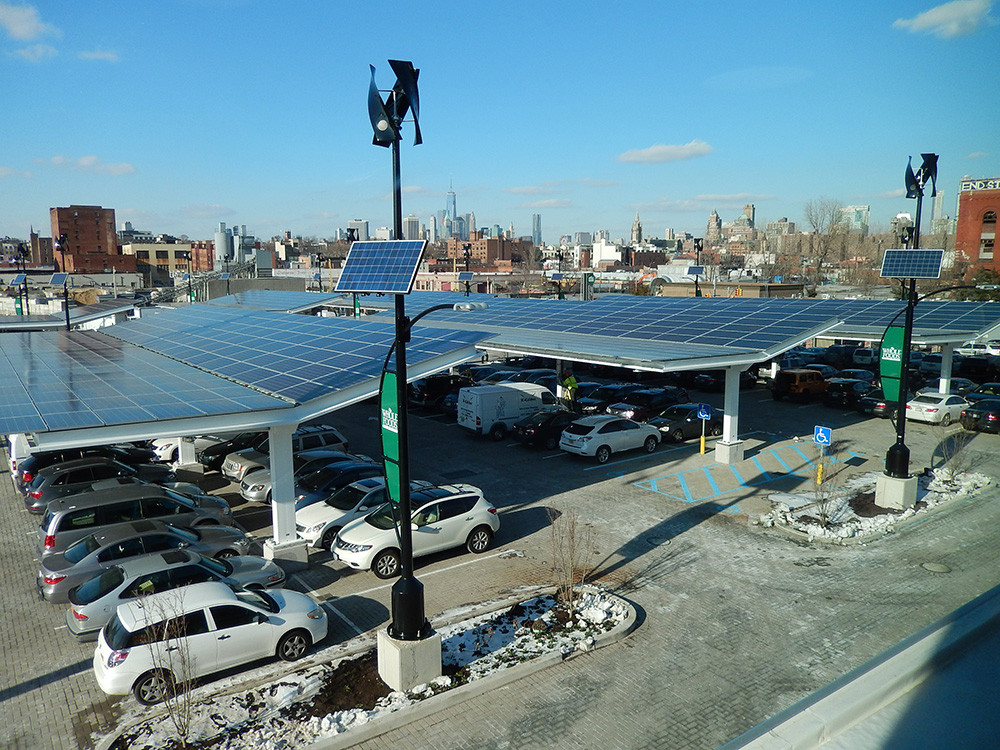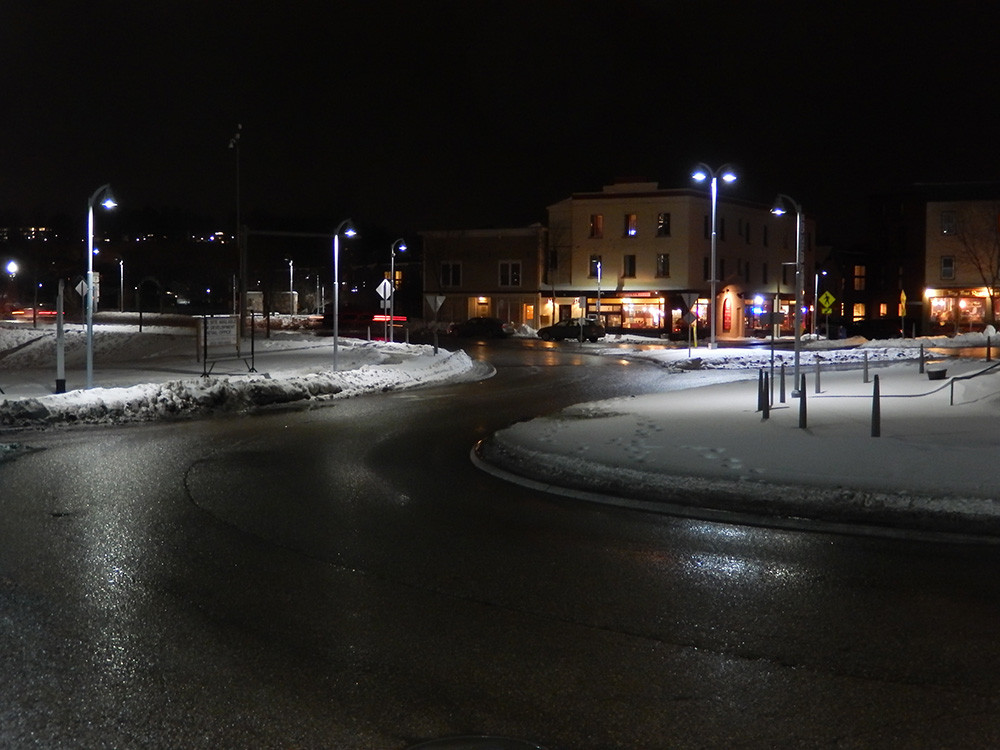Outdoor & Architectural




Living in the beautiful northlands of Vermont, we at Light/Space/Design have a great appreciation of a clear, starry night – something New York City dwellers must travel far from home to see. Perhaps that is also why we are increasingly aware of the disappearance of those stars due to outdoor lighting installations- yes, even in environmentally conscious Vermont.
While some communities require the installation of cut-off type luminaires (outdoor fixtures which do not spread direct light above horizontal) this quick solution does not address many types of lighting needs. Indeed, at a low mounting heighta high wattage cut-off fixture may in fact reflect more light into the sky than a non-cutoff fixture. Our lighting expertise is extremely useful no matter where your project is located, and especially in environmentally responsible communities.
Decorative street lighting is an area where Light/Space/Design is a leader in both education and design. As principal Donna Leban likes to say, decorative street lighting cannot be designed “by the numbers” or by daytime appearance alone. The difference between a comfortable outdoor lighted setting and one with obnoxious and sometimes dangerous glare from lighting is one of understanding light quality and the effect of night lighting on the human visual response.
Nothing creates a more stunning nighttime visual setting than beautifully lighted buildings in an urban townscape. Such settings attract night activities and businesses that generate economic vitality.
Lighting a building, monument, or landscape requires the sensitivity of an artist. Painting in washes of light on a façade or landscape in much the same way as an artist working with splashes of hue. Such lighting can use substantially less energy than flooding a façade with high powered flood lights.
Here are some “green” outdoor lighting issues to consider:
- Levels of outdoor lighting that are higher than current IESNA (the Illuminating Engineering Society of North America) guidelines are generally not advisable. Not only does it waste energy, it can be visually disruptive to neighboring homes and businesses.
- Contrast ratios between the brightest and lowest outdoor areas are more important than average footcandles in determining outdoor lighting visual quality. This includes lighting on adjacent properties. Most lighting ordinances do not reflect this basic quality parameter.
- The color qualities of light have a direct impact on our nighttime vision. Whiter light, typical of LED, metal halide or fluorescent systems, provides better visual response under low light levels. Therefore, yellow high pressure sodium lamps are no longer preferable for higher efficiency.
- LED lighting, despite its higher initial cost, is usually the best solution for outdoor lighting due to significantly reduced maintenance costs. Selecting a luminaire for long life and effective illumination requires special knowledge of the technology and modeling tools used in design.
- The same lamp wattage and type can appear quite different in one outdoor luminaire compared to another. Fixture design and construction is important, and as a rule, you get what you pay for. Fixtures should be selected for their performance as well as their appearance.
- Area lighting with floodlights should be avoided in most ordinary situations, particularly in permanent installations where surrounding light levels are low. Controlled floodlighting can be appropriate in special uses such as sports events, airport tarmack, and for temporary outdoor events. Harsh glare from floodlights has been implicated as the cause of accidents in parking lots and roadways, where drivers are temporarily blinded by oncoming floodlight.
- Hiring a qualified lighting consultant such as Light/Space/Design for outdoor lighting projects can save developers from costly battles with neighboring businesses and residential communities. A consultant who is familiar with the site and neighboring conditions will deliver a solution based on specific site conditions. This is usually not the case with a design prepared by a manufacturer in a distant city.
- A custom development deserves custom design. Light/Space/Design works with landscape architects and architects to achieve a very special outdoor lighting aesthetic for the most discriminating clients.
Here are a few additional tips for successful exterior light painting with environmental benefits.
- Just as in outdoor area lighting, the designer must be sensitive to the ambient (background) light. Accent lighting requires contrast to be effective. The darker the surroundings, the less light is needed for successful use of accent.
- Façade lighting directed from a distance, such as on a neighboring building, should be well shielded, so that they do not create unwanted glare on neighboring properties.
- Uplighting a façade should be done with great attention to preventing excessive light escape to the sky. Use roof overhangs and cornices to “capture” light in dramatic fashion that would otherwise pollute the sky.
- Emphasize architectural details with lower wattage lighting carefully aimed to capture wall textures.
- Also consider exciting dynamic lighting approaches for private or public areas, using LED systems that offer color changing as well as the addition of movement and patterns.